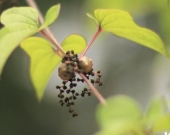


Jane Mulberry wrote:
I'd like to try dahlias. I read that there's quite a range of flavours depending on the variety, some taste good, others don't. Are there any you recommend?
 ); you don't see it about much. I enjoy eating that, and I'm able to minimise slug damage. I don't know if there's much between them, Lubera had some on sale - seem to have stopped, maybe they've realised lots of varieties can be eaten. Go for large-growing sorts for bigger tubers, easier to peel. Maybe the ray florets will give a clue as to root flavour.
); you don't see it about much. I enjoy eating that, and I'm able to minimise slug damage. I don't know if there's much between them, Lubera had some on sale - seem to have stopped, maybe they've realised lots of varieties can be eaten. Go for large-growing sorts for bigger tubers, easier to peel. Maybe the ray florets will give a clue as to root flavour.



greg mosser wrote:oh, we’ll open one up and check, but i suspect it’s actually a decorative but inedible gourd. they’re really tiny.


M Ljin wrote:My yam (Chinese) is four years old and has not spread. They seem to be very resilient and blend right in with the bindweed, which they resemble. They are climbing up a small willow tree. I have eaten a few aerial tubers raw and they are good—they very much resemble Bolboschoenus fluviatilis in flavor.